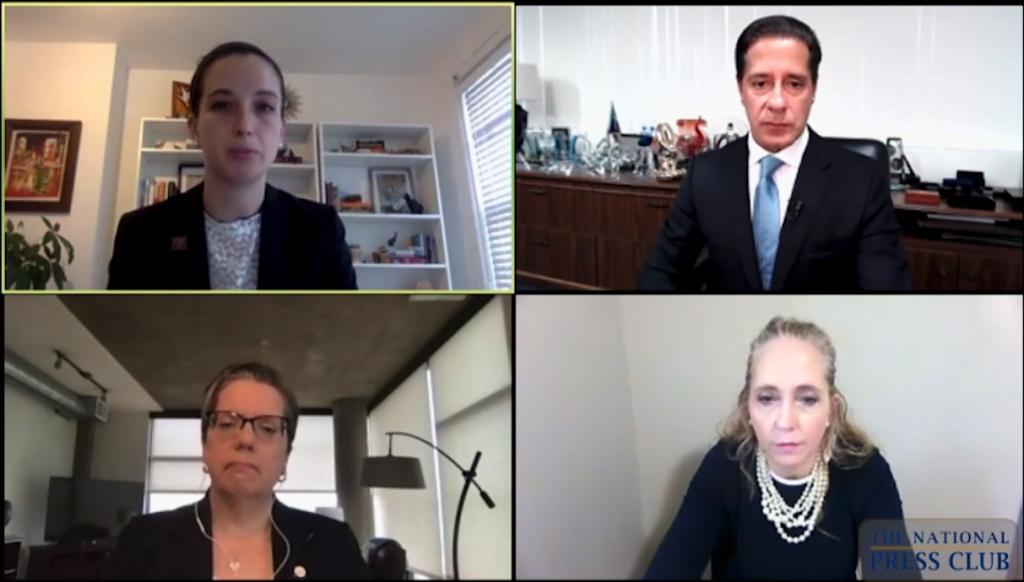Education panel says COVID-19 bared gaps in technology and support
A panel of education administrators said the coronavirus revealed gaps in access to technology and support across individuals, school districts and states during a National Press Club online event Thursday, May 28.
Alberto Arvalho, Miami-Dade County superintendent of schools, said his system was prepared for crises because it is a coastal city and shuts down for hurricanes. At such times the schools become community shelters, so plans were in place to distribute food and water. The district also had a pandemic plan in existence, which was adapted for the specific needs of COVID-19.
In a continuity of investment over the years, the system was able to create 11,000 hot spots and put devices in the hands of students containing personalized content, even for students still learning English, he said.
Clarissa Moffat Miller, executive director of the Council of Chief State School Officers, described states’ work to create online access and get devices to students, but said, “It’s still very disparate.”

She identified continuity of lessons and conditions for learning, including social and emotional needs as key considerations.
Anne M. Kress, president of Northern Virginia Community College, access to the internet in her region is almost “ubiquitous,” but elsewhere, access to the internet is unheard of and in some places it is still dial up modem access.”
The college's student body, two-thirds of it part-time, includes many working in services industries who were unemployed in the pandemic, she said. The school started an emergency fund with foundation money so students could apply for grants up to $500 for living expenses before unemployment began, she said.
The school used federal dollars to turn parking lots into wireless hotspots and distributed laptops to give access for students in need, she said.
She cited a quote by a previous president of a community college association that, “Community colleges have the least amount of resources to serve the students with the most needs.”
